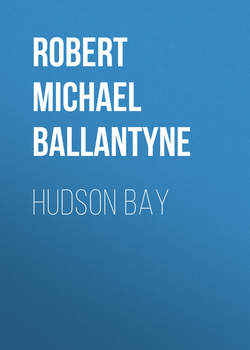Читать книгу Hudson Bay - Robert Michael Ballantyne - Страница 6
Chapter Five.
Voyage from York Factory to Red River—Voyage begun—Our manner of travelling—Encamping in the woods—Portaging and shooting wildfowl—Whisky-jacks—A storm—Lake Winnipeg—Arrival at Red River Settlement
ОглавлениеSomewhere about the beginning of September, Mr Carles, Mr and Mrs Gowley, Mr Rob, and myself set out with the Portage La Loche brigade, for the distant colony of Red River. The Portage la Loche brigade usually numbers six or seven boats, adapted for inland travelling where the navigation is obstructed by rapids, waterfalls, and cataracts, to surmount which, boats and cargo are carried overland by the crews. These carrying places are called portages; and between York Factory and Red River there are upwards of thirty-six, of various lengths. Besides these, there are innumerable rapids, up which the boats have to be pushed inch by inch with poles, for miles together; so that we had to look forward to a long and tedious voyage.
The brigade with which we left York Factory usually leaves Red River about the end of May, and proceeds to Norway House, where it receives Athabasca and Mackenzie River outfits. It then sets out for the interior; and upon arriving at Portage la Loche, the different boats land their cargoes, while the Mackenzie River boats, which came to meet them, exchange their furs for the outfits. The brigade then begins to retrace its way, and returns to Norway House, whence it proceeds to York Factory, where it arrives about the commencement of September, lands the furs, and receives part of the Red River outfit, with which it sets out for that place as soon as possible.
With this brigade, then, we started from York Factory, with a cheering song from the men in full chorus. They were in good spirits, being about to finish the long voyage, and return to their families at Red River, after an absence of nearly five months, during which time they had encountered and overcome difficulties that would have cooled the most sanguine temperament; but these hardy Canadians and half-breeds are accustomed to such voyages from the age of fifteen or sixteen, and think no more of them than other men do of ordinary work.
Mr Carles and I travelled together in the guide’s boat; Mr and Mrs Gowley in another; and Mr Rob in a third by himself. We took the lead, and the others followed as they best could. Such was the order of march in which we commenced the ascent of Hayes River.
It may not be uninteresting here to describe the matériel of our voyage.
Our boat, which was the counterpart of the rest, was long, broad, and shallow, capable of carrying forty hundredweight, and nine men, besides three or four passengers, with provisions for themselves and the crew. It did not, I suppose, draw more than three feet of water when loaded, perhaps less, and was, moreover, very light for its size. The cargo consisted of bales, being the goods intended for the Red River sale-room and trading-shop. A rude mast and tattered sail lay along the seats, ready for use, should a favourable breeze spring up; but this seldom occurred, the oars being our chief dependence during the greater part of the voyage.
The provisions of the men consisted of pemmican and flour; while the passengers revelled in the enjoyment of a ham, several cured buffalo-tongues, tea, sugar, butter, and biscuit, and a little brandy and wine, wherewith to warm us in cold weather, and to cheer the crew with a dram after a day of unusual exertion. All our provisions were snugly packed in a case and basket, made expressly for the purpose.
Pemmican being a kind of food with which people in the civilised world are not generally acquainted, I may as well describe it here.
It is made by the buffalo-hunters of the Red River, Swan River, and Saskatchewan prairies; more particularly by those of Red River, where many of the colonists spend a great part of the year in pursuit of the buffalo. They make it thus: Having shot a buffalo (or bison), they cut off lumps of his flesh, and slitting it up into flakes or layers, hang it up in the sun to dry. In this state it is often made up into packs, and sent about the country to be consumed as dried meat; but when pemmican is wanted, it has to go through another process. When dry, the meat is pounded between two stones till it is broken into small pieces; these are put into a bag made of the animal’s hide, with the hair on the outside, and well mixed with melted grease; the top of the bag is then sewn up, and the pemmican allowed to cool. In this state it may be eaten uncooked; but the voyageurs
